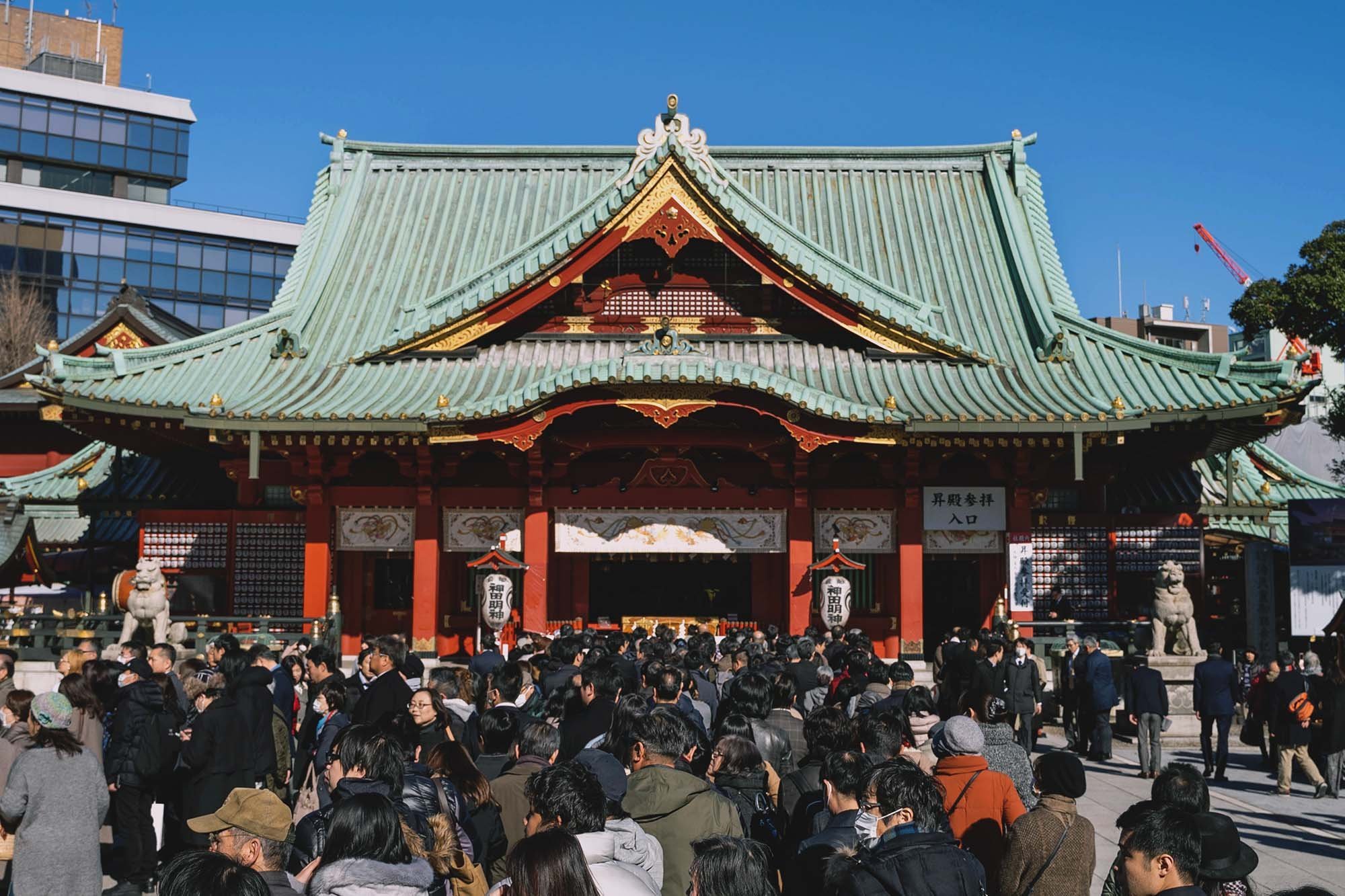What New Years in Japan is Like
Drinks, countdown parties and fireworks are probably some of the thinks you think about when it comes to New Years. This isn’t really the case in Japan, though.
New Years in Japan can generally be summed up into three words: Eat, drink, pray.
I’ve experienced the turn of the year in Japan a few times since living in the country, and for 2020, I spent the entire New Year’s holidays in Tokyo. I was able to experience what New Years is actually like for a typical Japanese person.
New Years in Japan is a time where the family gets together, and it features a lot of cultural traditions.
It starts off with food being prepared and traditional decorations being put up. Supermarkets open a lot of shelf space for this as everyone prepares for their family gatherings. People make their way back to their hometowns, businesses shut down, and the most relaxing time of year in Japan begins.
New Year’s Eve
Toshikoshi soba
On New Year’s Eve, we had toshikoshi soba, a buckwheat noodle dish that’s to be eaten just before midnight.
It’s either dipped in sauce or eaten as a soup, which is how we ate it. Our broth was shoyu or soy sauce based and topped with slices of duck and yuzu citrus zest.
Midnight
When the clock strikes midnight, nothing much happens.
The vast majority of Japan has no fireworks show as fireworks are generally considered a summertime activity. There’s no champagne-popping, no toasts, high fives, no kissing.
During my first experience, I was completely shocked at just how calm it was.
New Year’s Day
New Year’s Day starts off just as quietly.
Neighborhoods are silent, even in Tokyo, until areas near a shrine or temple. Japanese make their way there for hatsumode, which is the first shrine or temple visit of the year.
Hatsumode
The lines to pray can be really long. We went on New Year’s Day, but the line went out of the shrine grounds and wrapped around the block so we gave up and ended up going to a smaller shrine a couple days later.
Pictured above is hatsumode at Kanda Myojin Shrine near Akihabara, Tokyo. People will do a short, ritual prayer for the new year.
Usually, people will throw in 5 or 50 yen coins - ones with holes in them - ring the bell, bow, clap twice, pray, then bow again.
Otoso
We later did otoso, the ceremonial drinking of nihonshu, better known as Japanese sake.
It’s poured into special ceremonial Japanese lacquerware, traditionally seeped with several herbs, and drank to help keep healthy over the course of the year.
Ozoni
We also made and ate ozoni, a traditional mochi soup that Japanese eat on New Year’s Day.
The broth differs by region, but Tokyo’s is soy sauce based and it’s that type that we had. When I lived in Fukuoka prefecture, it was miso based.
A lot of Japanese-Americans keep this tradition in the US, and I’ve had this for New Years growing up in Hawaii as well.
In Hawaii, we’d also make our own mochi, but I don’t know anyone in Japan that does this anymore. Manually pounding mochi is even more rare, and it’s usually only done as a performance these days.
The vegetables for the soup, such as carrots that are darker red and daikon radish, are cut in great detail. I haven’t seen this level of emphasis in presentation outside of Japan. Better yet, the soup tasted just as good as it looked.
Osechi Ryori
Osechi is thought of as the main New Years food in Japan. Resembling a big, fancy bento box, it’s served traditionally prepared days in advance and served cold to everyone in the family. Most of the foods in it have some sort of meaning to them.
It’s traditionally made at home, but the process is incredibly time-consuming as it’s a lot of different dishes to make. Many don’t have that kind of time these days or don’t know how to make it, so a lot of people buy their osechi dishes from places like department stores.
There’s actually more food in there than it appears, so it does last for a while, but osechi is expensive, generally costing between a few hundred to a thousand dollars.
Nengajo
We briefly went through some nengajo, or traditional New Year’s greeting cards.
Friends, families and business partners send them out each year, but it’s a tradition in decline (about -11% YoY) as less and less people are doing so these days.
Post New Year’s Day
The next day, we finally made it to hatsumode at a smaller, local shrine after giving up on January 1st.
Omikuji
At these shrines, you can buy omikuji, which are good luck fortunes.
While I used to get these, I haven’t in the past couple years or so. If you get a good fortune (daikichi is the best), you keep it. If it’s not, you can tie it up on a tree at the shrine so the bad luck doesn’t follow you home.
Takoage
We later went for a walk and strolled through a local park. There were a couple of people doing takoage, or flying a kite. This is another traditional New Year’s activity, but apparently barely anyone does it anymore.
New Years in Japan means family and relaxing.
Almost everything shuts down, letting everyone just sit around, enjoy each other’s company, and just be for once.
It might be frustrating or boring for people traveling during this time, but for residents, especially those in Tokyo, it’s nice to have life slow down for a little.













These are some things that I frequently buy in Japan and recommend after living there for a long time.